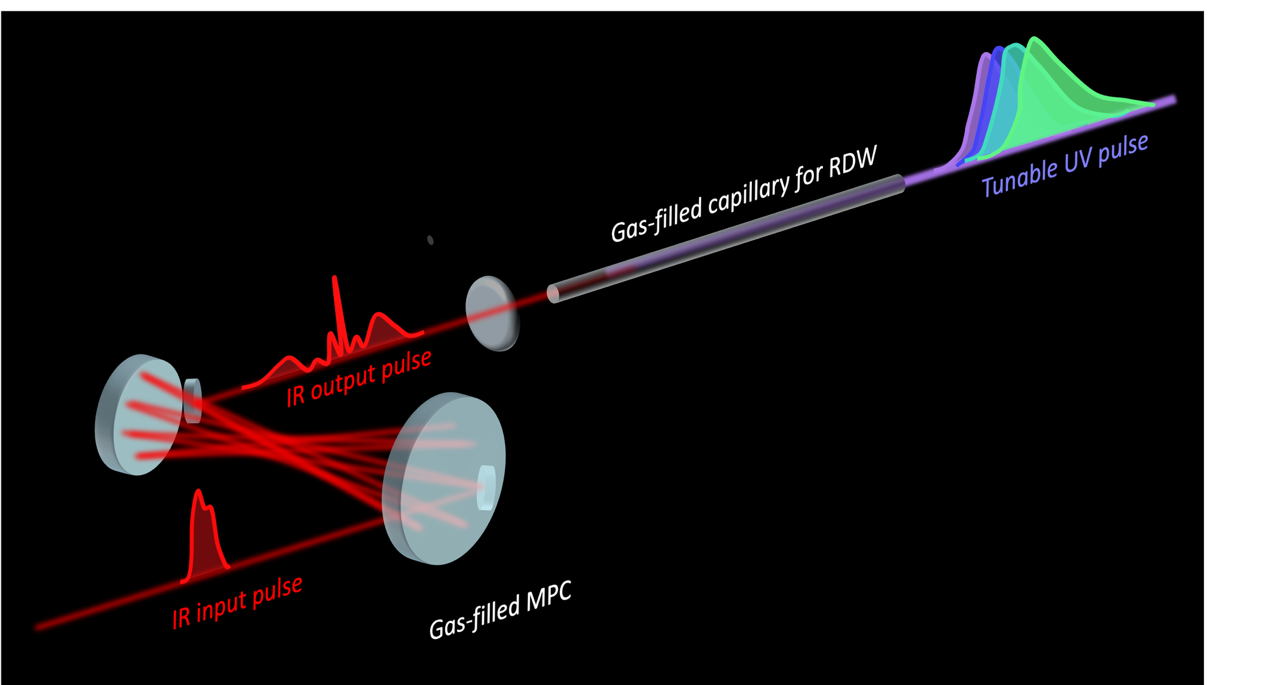Attosecond Science
Real time observation of electron dynamics in matter
The CFEL-ATTO Group develops advanced attosecond technologies to investigate the light-activated dynamics of matter with extreme time resolution. In particular, the main goal of our research is to track and ideally control the electronic motion in systems of increasing complexity, from simple molecules to biochemically relevant molecules and nanoparticles.
Recent highlights
New publication in APL Photonics
02 July 2025
Multi-pass cell driven multi-kHz dispersive wave emission of broadband deep-UV pulses


